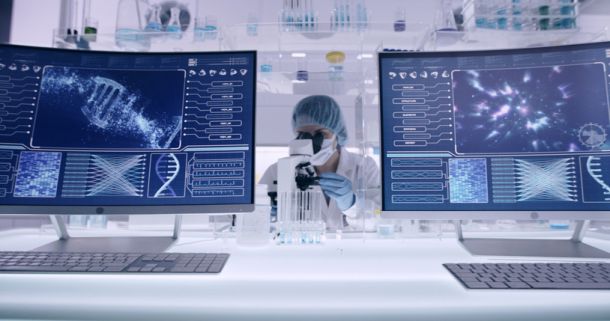INCONCRETO NEWS
Embracing the Digital Age: the Potential of Digital Solutions in Industry
Today’s business landscape is driven by a relentless pursuit of innovation and efficiency, with digital technologies serving as the cornerstone to realizing these ambitions. Nowhere is this more apparent than in industry, where the integration of digital solutions promises a paradigm shift towards greater productivity and prosperity for all stakeholders.
Indeed, digital transformation, exemplified by the emergence of Industry 4.0 over the past decade, represents a transformative force capable of reshaping traditional business models and unlocking previously untapped avenues for growth.
At the heart of digital transformation lies the infusion of agility into industries, providing them with the means to leverage the myriad benefits derived from big data analytics, thus accelerating numerous processes.
In this article, we delve deep into the multifaceted ways in which digital technology can facilitate continuous industrial transformation, illustrating the symbiotic relationship between technology and industrial processes across various stages of production.
The primary use of digital in industry: leveraging data for R&D projects
Nowadays, Research and Development (R&D) stands out as the focal point for the implementation of digitalization. Digital R&D takes centre stage as it presents pivotal opportunities for innovation and streamlines go-to-market processes, thereby minimizing wasted efforts and costs.
At the heart of Digital R&D lies data science, serving as the crucial driver for enabling a myriad of advancements. Among those, one of the most tangible and impactful advantages is its ability to effectively utilize digital tools to deliver measurable value within optimized timeframes.
This urgency is impellent when it comes to clinical R&D in the pharmaceutical industry. As Sanofi recently highlighted, in this critical sector, every delay represents a setback for those patients who are eagerly awaiting another treatment option to better manage their illness. Despite the pressing sense of urgency and responsibility, it still takes over ten years on average for a Phase 1 candidate to advance to regulatory approval and finally become accessible to patients. Last year, the integration of digital and R&D produced results across the R&D cycle showing that digital tools the teams are deploying are cutting days to months of time from the traditional innovation cycle.
The French group indicates that a significant challenge in developing new therapies has always been the scarcity of druggable targets capable of addressing the needs of large patient populations. Since diseases are multifaceted, scientists have been relying on numerous experimentations to validate potential targets, therefore requiring considerable time and effort. Here comes the effectiveness of digital and AI, that allow to expedite the search for new treatments, extracting insights from unstructured data to uncover new therapeutic targets. In fact, not only AI can predict potential adverse effects in advance, but it also consents to navigate the intricacies of diseases and pinpoint molecular entities – such as genes, proteins, or mRNA – that could be effectively targeted, all without the need for experimentation. In this sense, Eric Genevois-Marlin, Head of R&D Data and Data Science at Sanofi, declared: “With AI models and complementary data sets in place, unique treatments for a wide array of patients could be developed rapidly. We are embracing the integration of AI in drug development at Sanofi and aim to develop innovative new ways to better understand biology, accelerate our pharmaceutical research, and ultimately deliver the right molecule to the right patient.”
The interrelation between AI and R&D activities stays paramount. In fact, as the 2023 EU Industrial R&D Investment Scoreboard unveiled, AI appears to be largely R&D driven. In fact, three out of four activities are related to patenting and publishing scientific progress. This report demonstrates the higher ‘R&D&I-oriented’ character of AI with regard to the rest of the digital ecosystem. In parallel, while AI has been an important domain in R&D projects since 2006, the share of AI-related patents has grown significantly since the mid-2010s, and currently represents 20% of patents in the Digital Techno-Economic ecoSystem (DGTES). Globally, China boasts the largest share of AI players, accounting for 38% of all AI players, with the United States following closely at 20%, and the European Union at 11%. However, the EU’s position shifts when considering only players holding AI-related patents. In this context, China leads with 63%, trailed by the US at 12%, South Korea at 7%, the EU at 4%, Japan at 4%, and India at 3%.
Top 2023 Scoreboard companies engaged in AI according to the number of patents
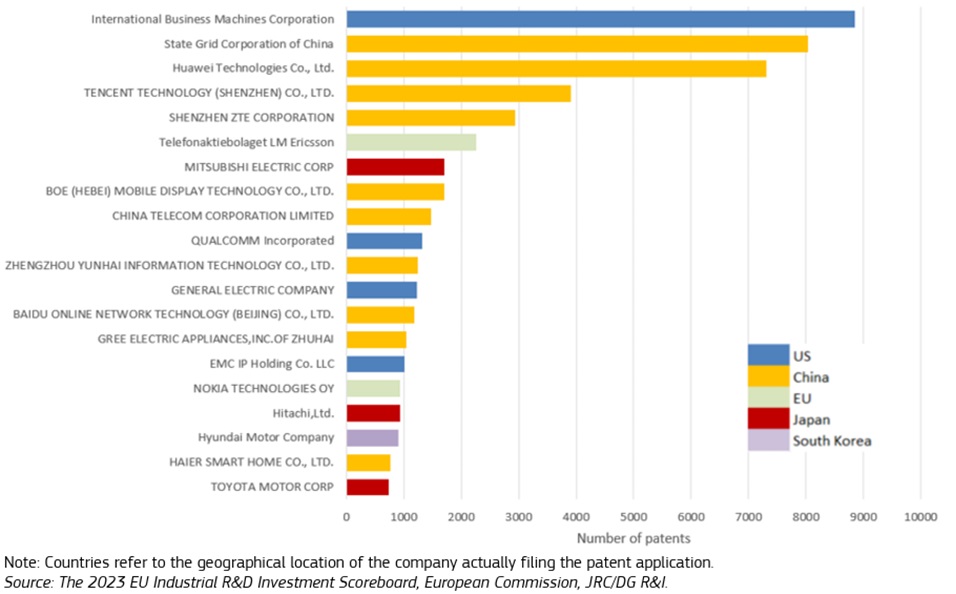
Amplifying the perspective: bringing added value through digital at all levels of the value chain
By employing data from diverse sources, manufacturers can obtain insights into their production processes, enhance their supply chain, minimize expenses, and expand product quality. Big data analytics can also support in predicting maintenance requirements, averting downtime, and fostering a safer work environment. Equipped with the appropriate tools and processes, big data analysis can propel growth and profitability, empowering manufacturers to maintain a competitive edge in an increasingly data-centric landscape.
Therefore, there are multiple spheres in which digital solutions can ensure efficient optimization of industrial processes. The development of digital factories can accelerate digital transformation across the organizations, ensuring major improvements in cross-functional coordination and adaptation to dynamic environments and ultimately positioning them for success. As illustrated by Autodesk, one of the global leaders in planning, designing, constructing, and operating industrial projects, a digital factory serves as a unified virtual model capturing essential factory attributes, including geometry, behaviour, and performance. This digital representation aggregates data from the structure, systems, assets, and processes, providing owners with insights into facility design, construction, and management: it showcases the integration of all digital networks within the facility and its operations. It also offers guidance on reconfiguration and optimization to maximize asset efficiency and productivity, fostering real-time collaboration, facilitating intelligent decision-making, and leading to more impactful outcomes, in a fully integrated environment.
Some specific applications can smoothly describe the advantages of implementing digital systems in industries, for granting enhanced efficiency, optimization, and decision-making.
Digital twins are regarded as a cornerstone of Industry 4.0 and the innovation foundation of tomorrow. These tools play a significant role, serving as virtual counterparts of real-world entities such as products, systems, beings, communities, and even cities. Continuously updated with data from their physical counterparts and environments, they act as a vital link between the virtual and physical realms.
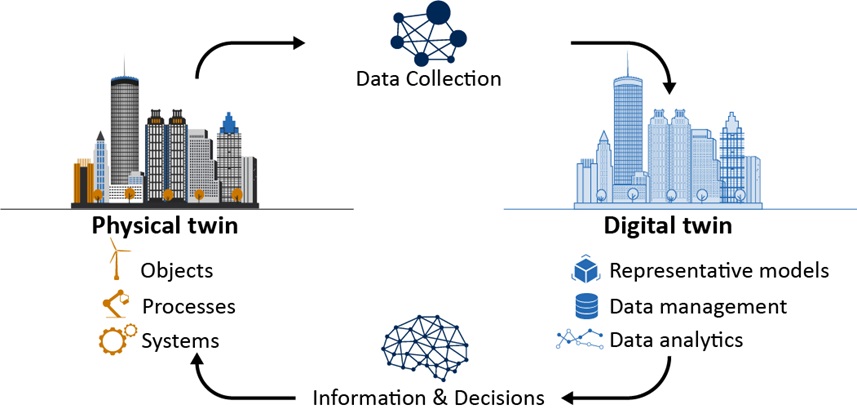
These virtual representations give an overview of entire operations and provide inspiring insights to assess the impact of every decision. Equipped with understandings gathered from the digital twin, facilities can undergo continuous optimization throughout their entire lifecycle, including the ability to fine-tune specific production runs as needed. Indeed, following the initial investments, iterative enhancements of a product can be informed by real-world operational data derived from numerous digital twins. Such data can guide engineers and designers in the development of new products or iterations. Digital twins provide companies with ongoing insights into the performance of their products in real-world settings, and with these insights, lead them to iterate and innovate on products more swiftly and efficiently. A specific case of digital twin solution involves replicating the physical end-to-end supply chain. This application enables comprehensive oversight of the entire supply chain, encompassing lead times, and facilitates real-time adjustments both internally and with partners.
Supply Chain Digital Optimization, facilitated by advanced big data analysis and AI utilization, stands as a potent asset for facilitating informed decision-making and operational agility. By harnessing big data, supply chain managers can refine demand forecasting, streamline production planning and scheduling, and enhance transportation efficiency, thereby reducing supply chain risks. Analysts point out that a fully implemented digital supply chain offers substantially greater visibility into its operations. The enhanced near-real-time visibility into supplier performance and customer needs enables supply chain managers to cultivate more complex relationships with multiple suppliers, thereby safeguarding against various sources of disruptions, while prioritizing customer-centricity. A digital supply chain leverages shared quality and control data from suppliers, empowering companies to anticipate issues and respond proactively without extensive preplanning. In the end, while traditional supply chains rely on human decision-making informed by machine inputs, digital supply chains prioritize machine-driven decisions with human oversight.
Predictive Maintenance anticipates and prevents potential failures by conducting maintenance before they occur. This approach involves ongoing analysis of connected assets and equipment conditions to minimize the risk of unplanned downtime or machine failure. It represents a transformative application of the Internet of Things (IoT), offering significant benefits including anticipated timely resolution, increased worker productivity with maintenance plans tailored to their schedules, substantial cost savings, larger return on investment, enhanced product design informed by valuable insights, and improved worker safety by avoiding potential breakdowns or malfunctions.
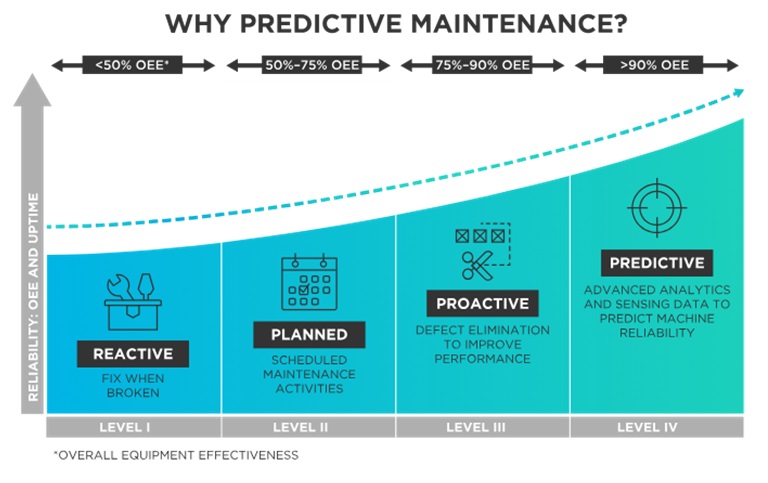
All these data-driven operations let companies to design and deploy more sustainable choices and processes, accompanying them in making industrial projects more environmental-friendly. With manufacturing accounting for 20% of global emissions and being responsible for 54% of the world’s energy consumption (WEF 2022), there is an evident urgency to monitor these metrics and adopt environmentally friendly policies to ensure compliance with internal or external sustainability goals.
The power of Artificial Narrow Intelligence: AI integrated by human decision-making
Maintaining human involvement while utilizing digital applications is of utmost importance. This principle serves as the guiding ethos behind Artificial Narrow Intelligence (ANI), which is capable of mastering a single or narrow task, often with greater speed and precision than the human mind. However, the human element remains indispensable, as ANI operates strictly within its predefined parameters and always under human supervision. It’s crucial to recognize that narrow AI does not seek to replicate human intelligence entirely; rather, it excels within its designated scope, adhering to predefined rules and demonstrating proficiency in specific tasks.
As detailed in a recent paper published by the World Economic Forum, the healthcare industry has been at the forefront of numerous advancements in recent years, particularly in areas such as diagnostic accuracy, telemedicine, drug research, and surgical procedures. In these specific domains, ANI has demonstrated its effectiveness, offering real-time guidance during surgeries and valuable insights post-treatment. However, for these applications to gain acceptance among patients and be seamlessly integrated by healthcare providers, the WEF emphasizes several fundamental prerequisites. These include ensuring the complete reliability of data, mitigating bias, and upholding the precision of narrow AI. Additionally, transparent regulation, independent certification, and robust data protection measures are indispensable pillars for the successful implementation of ANI in healthcare, ultimately benefiting patients.
What’s particularly noteworthy is that these benefits extend beyond individual patients to the entire healthcare industry, resulting in reduced energy consumption and resource wastage due to enhanced surgical efficiency. The potential contribution of ANI to creating a greener, more environmentally conscious healthcare sector could be significant.
How narrow AI can help surgeons
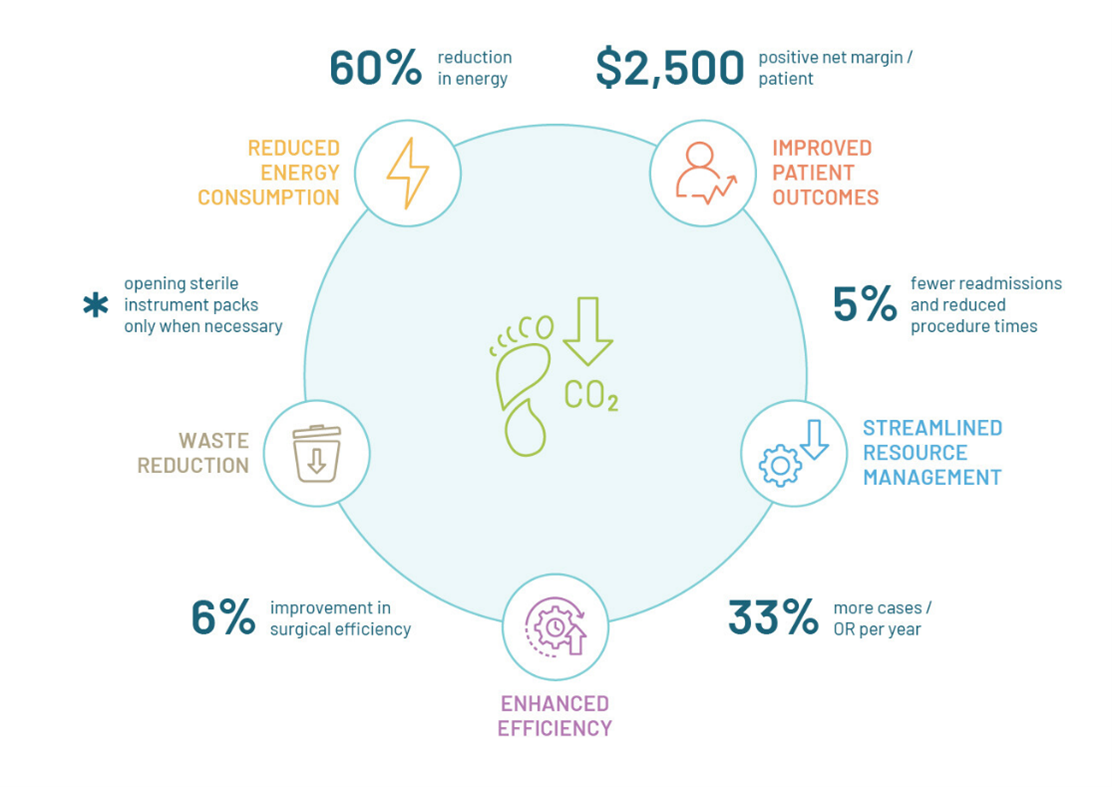
INCONCRETO, as an international consultancy, can provide expertise in capital project optimization in various industry, including in healthcare.
Connect with our people!
We combine technical expertise with large program execution practices, improving predictable outcomes and steering profitability on Capex/Opex project investments.
For further readings, you may consult these sources
- Artificial Intelligence in Research and Development: An Expanding Ecosystem, by Tech4Future
- The future is now: Unlocking the promise of AI in industrials, by McKinsey
- Applications of Artificial Intelligence Across Various Industries, by Forbes
- Top 8 Digital Twin Benefits, by PTC
- Digitalization in Manufacturing: Driving Industry 4.0 and Digital Transformation, by PTC
- Big Data and its impact on Supply Chain Management, by PredikData
- Digital Supply Chain Explained, by Netsuite
- What is narrow AI and how can it improve healthcare?, by WEF
Newsletter
© INCONCRETO. All rights reserved. Powered by AYM







































